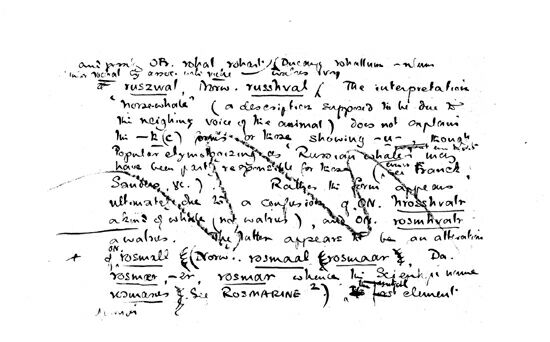|
Tolkien was born in Bloemfontein, South Africa and
was educated in England.
He became professor of Anglo-Saxon, English
language and literature at Oxford University. His books were undoubtedly
inspired by his in-depth explorations of the literature of Old and
Middle English.
His "Sir Gawain and the Green Knight" became the
standard text for students and he was also known as one of the best
philologists in the world.
Tolkien became famous for his remarkable books, of
which The Hobbit and The Lord of the Rings are probably the best known.
Not only did he invent a complicated mythological
world inhabited by hobbits and strange creatures in his remarkably
imaginative books, but he also went so far as to invent a special
language for them.
Tolkien had a very special kind of genius. His
imagination and creativity knew no bounds.
His genius in no small part lay in his ability to
visualize and to describe so beautifully the strange world that he
conceptualized in such intricate detail.
It was a feat of inventiveness that could only have
been accomplished by an author of astounding imaginative and creative
ability.
The following handwriting sample comes from a
discarded draft from one of Tolkien's manuscripts.
Let's take a look at it.

Illustration by permission of
Oxford University Press. .© Image copyright
Tolkien's Handwriting
Tolkien's handwriting is warm, rounded, small and cerebral.
You could almost have expected his handwriting to
look like this. It has an unmistakable air of intellectuality combined
with creativity.
Look a little closer and you will see that there
are some words that are so artistically penned that they seem to have
been written by an artist or a painter.
And indeed, Tolkien did paint word landscapes and
evocative, imaginative scenery into his books.
In the third line from the bottom, the "N" in "Norw"
seems to have been designed with a paintbrush Ė it is almost
calligraphic.
Other capitals such as the many Rís scattered about
the manuscript have a great sense of line.
These signs together with the warmth of the ductus
(the fullness of the strokes) attest to his artistry, creativity and
remarkable imagination.
In addition to the creative aspect which is so
marked, there is also a highly cultured and academic feel to the
manuscript as a whole.
The even sized letters, the careful spacing,
fluency of line and attention to detail all point to a highly organized
and intelligent mind.
Notice how the wavy line crossing out the work
slants to the left and supports the upright trend of the letters as a
whole.
Note also the wide spaces between the words of the
fourth line from the bottom.
These indicators reveal Tolkienís inner
independence, his ability to go it alone and to write the type of
literature that had never been attempted before.
Despite the small size of the letters, there is
confidence and positiveness in the dark lines. We see this also in the
firm down strokes and in the consistent rhythmic quality that shows a
strong sense of direction.
Tolkienís vision was constantly before him and he
had every aspect of his work superbly planned. He knew exactly where he
was going.
The overall impression that we gain is one of a
bubbling, rich, imaginative and creative energy. Indeed, it was this
very imaginative and creative energy that brought his world of fantasy
to life.
This was an excerpt from "The Mark of Genius"
where you'll find many more such descriptions of "Genius in Action as
seen from their handwritings.
About The Mark of
Genius
The Mark of GeniusĒ is a unique guide that is
dedicated to showing you exactly how to find giftedness, talent and
creativity in handwriting.
You won't find another book like it anywhere.
"The Mark of Genius" is
exclusive to Graphic Insight and is only available as an ebook.
For more information about The Mark of Genius
click here: The
Mark of Genius
|